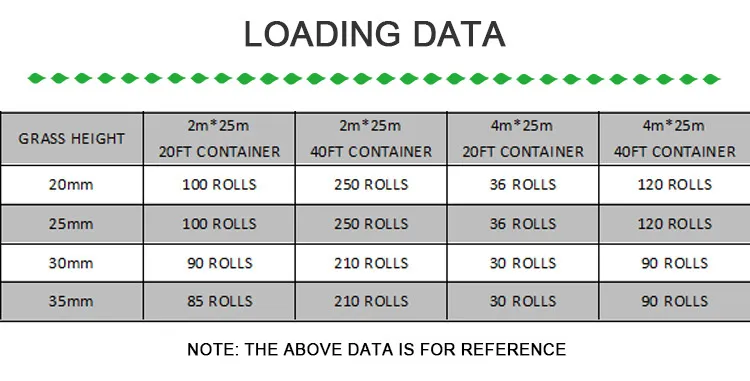
- Afrikaans
- Arabic
- Belarusian
- Bengali
- Czech
- Danish
- Dutch
- English
- Esperanto
- Estonian
- Finnish
- French
- German
- Greek
- Hindi
- Hungarian
- Icelandic
- Indonesian
- irish
- Italian
- Japanese
- kazakh
- Rwandese
- Korean
- Kyrgyz
- Lao
- Latin
- Latvian
- Malay
- Mongolian
- Myanmar
- Norwegian
- Persian
- Polish
- Portuguese
- Romanian
- Russian
- Serbian
- Spanish
- Swedish
- Tagalog
- Tajik
- Thai
- Turkish
- Turkmen
- Ukrainian
- Urdu
- Uighur
- Uzbek
- Vietnamese
golf putting grass
Nov . 20, 2024 18:19 Back to list
The Importance of Grass for Golf Putting
When it comes to golf, putting is often regarded as one of the most critical components of the game. Many players spend a significant amount of time perfecting their putting stroke, while others might invest in top-notch putters and training aids. However, one aspect that is frequently overlooked is the type of grass used on the putting greens. The quality of grass can considerably impact putting performance, and understanding this relationship is crucial for golfers at all levels.
The Science Behind Putting Greens
The surface on which golfers putt can vary widely, with different types of grasses providing distinct playing conditions. Commonly used grasses for putting greens include Bentgrass, Bermuda grass, and Poa Annua, each with unique characteristics that can influence the speed and behavior of the ball.
1. Bentgrass This is one of the most popular choices for putting greens, particularly in northern climates. Bentgrass is known for its fine texture and ability to create a smooth, even surface that facilitates a clean roll. It can be maintained to achieve fast green speeds, often exceeding 12 on the Stimpmeter (a device used to measure the speed of greens). However, Bentgrass requires regular maintenance and can be sensitive to heat and humidity.
2. Bermuda Grass Commonly found in southern regions, Bermuda grass is favored for its durability and ability to recover quickly from wear and tear. It thrives in warmer climates and can provide a fast and challenging putting surface. However, Bermuda grass often has a coarser texture than Bentgrass, which can affect the ball's roll, especially if the grass is not maintained at a low height.
3. Poa Annua This is a lesser-known grass that often invades Bentgrass greens, particularly in transitional zones. It has a softer texture and can create challenging conditions for golfers. Poa Annua greens are often more unpredictable, particularly when the grass changes from winter to summer growth cycles. Golfers might find that their putts can break differently based on the mixture of grasses on the green.
The Role of Grass Maintenance
golf putting grass

Regardless of the type of grass used on a putting green, proper maintenance is essential to ensure optimal playing conditions. This includes regular mowing to maintain an appropriate height, adequate watering to prevent stress during hot weather, and aeration to promote healthy root growth. Additionally, applying fertilizers and monitoring for pests and diseases can help maintain the health of the grass, which in turn affects the quality of the putting surface.
Furthermore, topdressing with sand can help smooth out imperfections and promote faster green speeds, contributing to a better playing experience. Even small changes in grass height, moisture content, or surface smoothness can have a significant impact on how a golfer perceives the green and executes their putts.
The Impact on Golfer Performance
Understanding the type of grass on a putting green can greatly enhance a golfer’s strategy and performance. Knowledge about how different grasses affect ball roll, speed, and break can help players read greens more effectively and develop better putting techniques. A golfer accustomed to putting on Bentgrass might struggle when faced with the different conditions presented by Bermuda grass or mixed greens.
Moreover, golfers should also take into consideration the specific characteristics of the greens on the courses they frequently play. By adapting their putting style to the grass type and the conditions on that particular day, golfers can improve their overall performance.
Conclusion
In conclusion, the grass on golf putting greens plays a vital role in the game of golf. Not only does it influence the speed and smoothness of the ball's roll, but it also presents unique challenges that require each golfer to adapt their approach. By understanding the differences between grass types and the importance of maintenance, golfers can enhance their putting skills and overall performance on the green. As the saying goes, Drive for show, putt for dough, and having the right grass can make all the difference in putting success.
-
The Benefits of Artificial Turf for Indoors
NewsJul.15,2025
-
How Artificial Grass Suppliers Ensure Quality Products
NewsJul.15,2025
-
Artificial Grass and Pets: A Space for Relaxation
NewsJul.08,2025
-
Balcony & Outdoor Decoration with Artificial Grass
NewsJul.08,2025
-
Best Indoor Artificial Grass for Home
NewsJul.07,2025
-
Best Pet Turf for Dogs: Safe & Durable Artificial Grass Options
NewsJul.07,2025
Products categories









